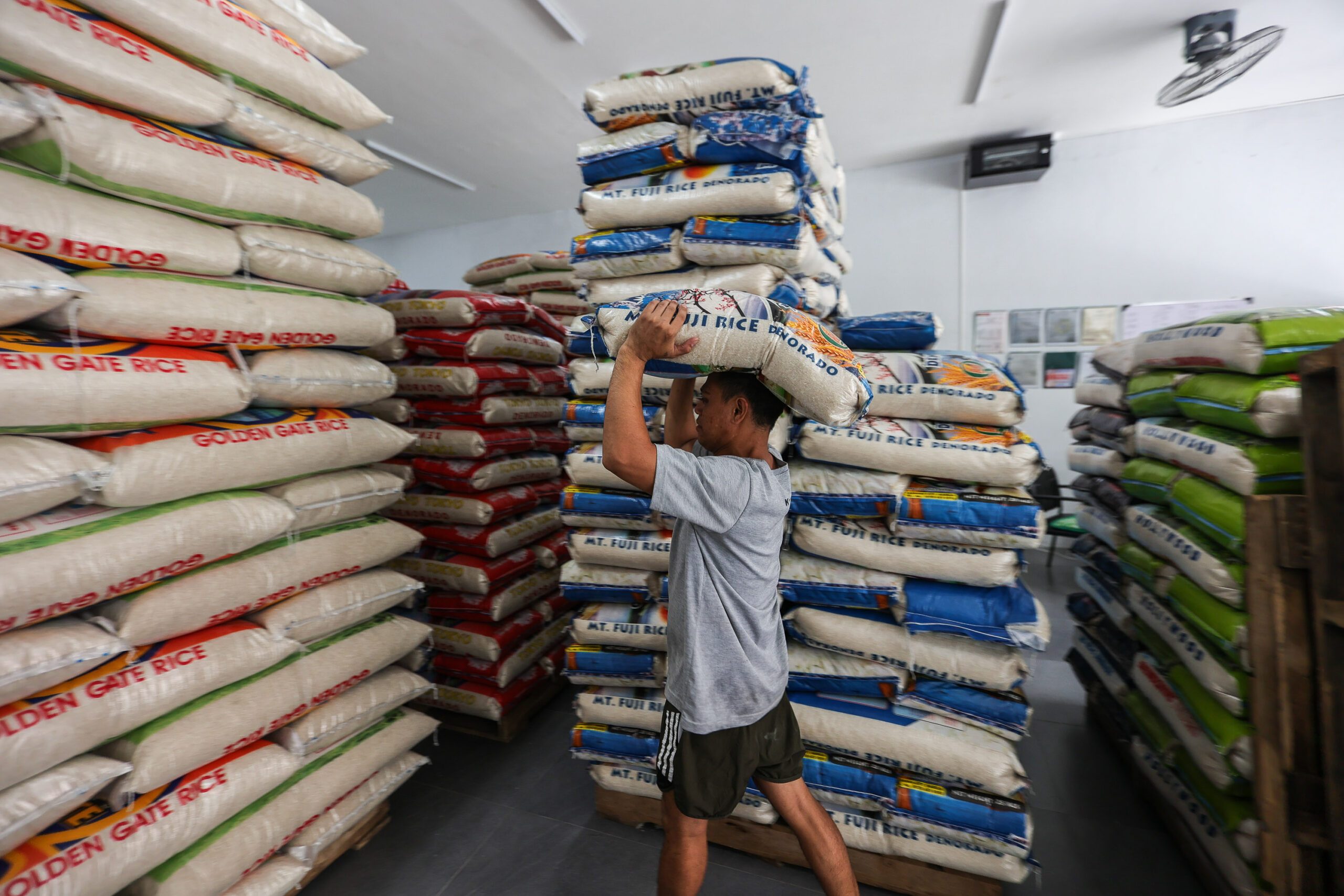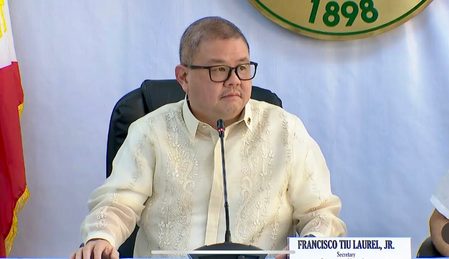SUMMARY
This is AI generated summarization, which may have errors. For context, always refer to the full article.

MANILA, Philippines – Philippine lawmakers are aiming to reduce the price of rice to below P30 per kilo, while moving to remove key features of the law passed by the previous administration, which promised the same price range.
House Speaker Martin Romualdez said on Monday, May 6, that the House of Representatives and the Department of Agriculture (DA) are targeting reducing the price of rice to below P30 per kilo in some parts of the country by July, somewhat closer to President Ferdinand Marcos Jr.’s campaign promise of P20 per kilo.
“We are confident that it is possible to offer rice below P30 per kilo as early as July this year,” Romualdez said in a statement, released after a meeting on the same day with key officials including DA Secretary Francisco Tiu Laurel Jr.
“The Department of Agriculture is currently identifying the areas where affordable, well-milled rice will be made available to the public,” he added.
Not really new
Technically, Marcos has somewhat fulfilled his campaign promise by setting up Kadiwa stores, which sell heavily subsidized goods in very select areas of the country. These stores are quite limited, and there are limits on buying items.
Currently, rice prices hover between P49 and P60 per kilo, depending on the quality. Kadiwa stores are able to sell rice at P39 per kilo, with some as low as P20 per kilo, due to government subsidies.
Economists have repeatedly pointed out that these stores are not viable in the long term, as they could take billions from the state’s coffers. The rollout must also be targeted.
Not so liberal
Tiu Laurel said after the meeting with Romualdez they are hopeful that the DA and the National Food Authority (NFA) would have more control over rice supply and prices, especially with the ongoing discussion on amending the Rice Tariffication Law (RTL).
“Dati nakatali ‘yung kamay ng DA and NFA due to ‘yung certain law that we have existing so mayroon tayong pinababago sa batas at hopefully ma-pass ng Congress ito para mabigyan ng leeway na mag-intervene ang DA at NFA sa issue sa bigas,” said Tiu Laurel.
(Before, DA and NFA’s hands were tied because of a certain law that we have existing. We’re trying to amend the law and hopefully Congress will pass this to give leeway for DA and NFA to intervene in the issue of rice.)
For the short term, rice sourced by the NFA will be sold in Kadiwa centers across the country.
“Starting in July, some of these Kadiwa centers will be operational in specific regions and will offer affordable, well-milled rice five days a week. The operation of these centers will depend on the rice supply available to the National Food Authority,” Tiu Laurel said.
The latest move contradicts the Duterte administration’s goal of lowering rice prices through liberalization or a free market. Duterte’s economic managers touted that liberalizing rice will lower prices to P27 per kilo. Since the RTL’s enactment in 2019, rice prices sold in regular markets are nowhere near that price.
NFA to import soon?
Before the meeting with Romualdez, Tiu Laurel attended the House hearing on the proposed amendments of the RTL. One of the things DA wants amended is the restoration of NFA’s ability to import rice through the authority of the DA secretary.
When it was signed in 2019, the RTL stripped NFA of its regulatory and import licensing functions while making it responsible for the country’s emergency buffer stock to be sourced purely from local farmers. Meanwhile, private sector was allowed to import freely, subject to a tariff system. The collected tariffs would then be used to support farmers through various programs, including mechanization.
Tiu Laurel said during the hearing on Monday that there are a lot of factors at play to lower rice prices, with logistics being a critical component.
The agriculture secretary mentioned possible action points such as distributing more fertilizers to farmers, decreasing post-harvest losses, improving the country’s ports.
“In essence, if we can get all of these in place, I think we can bring down prices of rice by at least 20% after three years,” said Tiu Laurel. “[Mag]-target pa tayong libreng tubig, lalo na sa solar irrigation, all of that, pwedeng maging 30% less eh. But of course, depende sa magkano ‘yung inputs at that time.”
(We can target to distribute free irrigation, especially with solar irrigation, all of that, we can bring down prices by 30%. But of course, that depends on how much the inputs at that time.)
For the last 27 years, there had been no major investment in agriculture, said Tiu Laurel. According to the agriculture secretary, they would need P1.2 trillion for irrigation, P93 billion for post-harvest facilities, and P24 billion for ports.
Proposed changes in the RTL
Aside from NFA’s power to import rice, here are some of DA’s proposed changes to the RTL:
- Extend the Rice Competitiveness Enhancement Fund (RCEF) until 2030
- Increase RCEF’s total annual appropriation from P10 billion to P15 billion
- Creation of the Rice Industry Development-Program Management Office that will serve as the secretariat of the RCEF
Tariff revenues exceeding the P10 billion annual appropriation was supposed to assist farmers and support related programs. Part of the DA’s proposed amendments is to allocated tariff revenues to crop diversification, water impounding and watershed rehabilitation and development, solar power irrigation programs.
A representative from the Department of Finance said their agency supports the proposed increase of RCEF’s annual appropriation, and is set to submit their position paper awaiting the signature of Finance Secretary Ralph Recto. – Rappler.com
Add a comment
How does this make you feel?

![[In This Economy] Why amending the Rice Tariffication Law will reopen Pandora’s box](https://www.rappler.com/tachyon/2024/05/amending-rice-tarrification-may-17-2024.jpg?resize=257%2C257&crop=583px%2C0px%2C1080px%2C1080px)
![[ANALYSIS] Damage control for dummies](https://www.rappler.com/tachyon/2023/10/damage-control-for-dummies.jpg?resize=257%2C257&crop=280px%2C0px%2C720px%2C720px)
![[In This Economy] Bogeymen spawned by Marcos’ rice price caps](https://www.rappler.com/tachyon/2023/09/tl-price-cap.jpg?resize=257%2C257&crop=266px%2C0px%2C720px%2C720px)
![[Vantage Point] Price control: The magic wand that does not work](https://www.rappler.com/tachyon/2023/09/20230919-magic-wand-doesnt-work.jpg?resize=257%2C257&crop_strategy=attention)
There are no comments yet. Add your comment to start the conversation.